Mirella Sichirollo Patzer's Blog, page 55
May 24, 2011
When We Were Gods by Colin Falconer
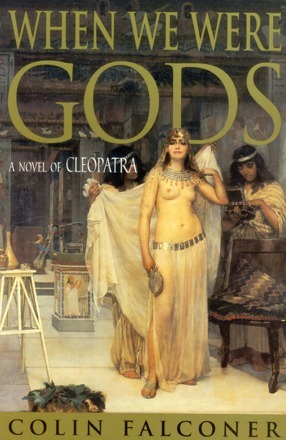
Throughout the centuries, the legend of Cleopatra VII, Queen of Egypt, has fascinated and intrigued. But it has also been clouded by speculation, embellishment, and stormy controversy. Thousands of years after her death, she remains an iconic figure, an enigma; her fascinating life the fodder for numerous novels and movies. Of all the books I've read about this notorious heroine, Colin Falconer's version is perhaps the most plausible and realistic version. He has struck a suitable balance between circumspect and entertainment.

Cleopatra was born into the Ptolemaic dynasty sometime in late 69 BC – August 12, 30 BC. She was considered the last pharaoh of Ancient Egypt. She spoke Greek and later Egyptian, flaunting herself to the world as Isis, an Egyptian goddess. After the death of her father, as was tradition for Egyptian royal families of the time, she married her brothers, but after their deaths or murders, she became Egypt's sole ruler. Her liaisons with Caesar strengthened her power and she bore him a son whom she named Caesarian.
 Caesar
CaesarAfter Caesar's horrific assassination, Cleopatra united with Marc Antony, handsome, powerful, and natural leader of men who loved the decadent life.
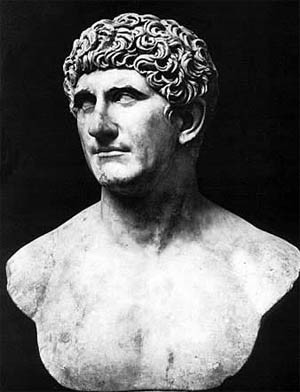 Marc Anthony
Marc AnthonyTogether with Marc Antony they set out to defeat Caesar's power hungry and ruthless nephew and heir, Octavian.
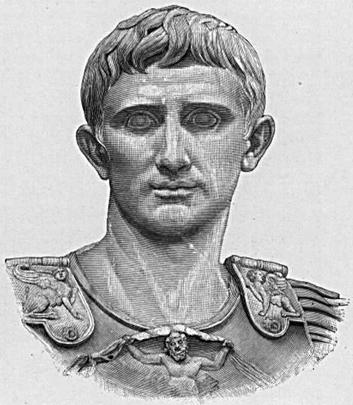 Octavian
OctavianCleopatra bore the handsome, charismatic Marc Antony twins, Selene and Alexander.
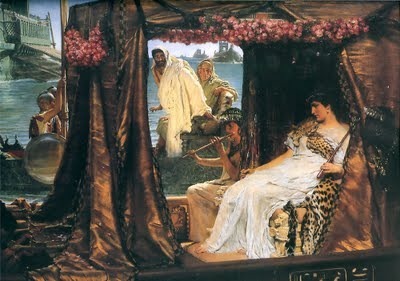 Cleopatra and Marc Antony
Cleopatra and Marc AntonyBut the fates brought little luck to Marc Antony and he committed suicide after failed battles. Heartbroken, Cleopatra followed him to the grave by allowing the bite of a poisonous asp to kill her.
 Cleopatra by Frank Dicksee
Cleopatra by Frank DickseeThe novel opens when Cleopatra is 18 years old at the death of her father, Ptolemy. Intrigue and danger follows as powerful men try to usurp the throne of Egypt from her. My favourite passage in the novel is the very first scene where Marc Antony is introduced. I must have read and re-read that scene no less than ten times just for the pure enjoyment. Nothing short of brilliant and so much fun! The story unfolds chronologically, realistically, and with a wonderful mix of fiction and fact. I cannot state it enough how real the story seemed and how believable the author portrayed Cleopatra to the reading audience. Her cunning and wisdom was more than adequately captured, as was her devotion to her children, her country, and her love for Caesar and Marc Antony.
The author's writing style is direct and easy, allowing the reader to immerse themselves into the story seamlessly. Cleopatra evolves as a sensual, strong, woman trapped in a world of betrayal and the constant battle for power and supremacy. I liked this author's prose and the way he tells a story. He worked hard to present the facts, but was able to add enough color and individuality to keep me turning and turning the pages. The level of detail made this novel real as life itself. This is the first novel I've read by Colin Falconer, but it won't be the last. I'll be collecting all of his books and will avidly follow his career from here on in. Bravo Mr. Falconer! Thank you for the pleasure of reading such a fine book. Now, off to Amazon to acquire The Sultan's Harem.




































Published on May 24, 2011 10:17
When We Were Gods by Colin Falconer

Throughout the centuries, the legend of Cleopatra VII, Queen of Egypt, has fascinated and intrigued. But it has also been clouded by speculation, embellishment, and stormy controversy. Thousands of years after her death, she remains an iconic figure, an enigma; her fascinating life the fodder for numerous novels and movies. Of all the books I've read about this notorious heroine, Colin Falconer's version is perhaps the most plausible and realistic version. He has struck a suitable balance between circumspect and entertainment.

Cleopatra was born into the Ptolemaic dynasty sometime in late 69 BC – August 12, 30 BC. She was considered the last pharaoh of Ancient Egypt. She spoke Greek and later Egyptian, flaunting herself to the world as Isis, an Egyptian goddess. After the death of her father, as was tradition for Egyptian royal families of the time, she married her brothers, but after their deaths or murders, she became Egypt's sole ruler. Her liaisons with Caesar strengthened her power and she bore him a son whom she named Caesarian.
 Caesar
CaesarAfter Caesar's horrific assassination, Cleopatra united with Marc Antony, handsome, powerful, and natural leader of men who loved the decadent life.
 Marc Anthony
Marc AnthonyTogether with Marc Antony they set out to defeat Caesar's power hungry and ruthless nephew and heir, Octavian.
 Octavian
OctavianCleopatra bore the handsome, charismatic Marc Antony twins, Selene and Alexander.
 Cleopatra and Marc Antony
Cleopatra and Marc AntonyBut the fates brought little luck to Marc Antony and he committed suicide after failed battles. Heartbroken, Cleopatra followed him to the grave by allowing the bite of a poisonous asp to kill her.
 Cleopatra by Frank Dicksee
Cleopatra by Frank DickseeThe novel opens when Cleopatra is 18 years old at the death of her father, Ptolemy. Intrigue and danger follows as powerful men try to usurp the throne of Egypt from her. My favourite passage in the novel is the very first scene where Marc Antony is introduced. I must have read and re-read that scene no less than ten times just for the pure enjoyment. Nothing short of brilliant and so much fun! The story unfolds chronologically, realistically, and with a wonderful mix of fiction and fact. I cannot state it enough how real the story seemed and how believable the author portrayed Cleopatra to the reading audience. Her cunning and wisdom was more than adequately captured, as was her devotion to her children, her country, and her love for Caesar and Marc Antony.
The author's writing style is direct and easy, allowing the reader to immerse themselves into the story seamlessly. Cleopatra evolves as a sensual, strong, woman trapped in a world of betrayal and the constant battle for power and supremacy. I liked this author's prose and the way he tells a story. He worked hard to present the facts, but was able to add enough color and individuality to keep me turning and turning the pages. The level of detail made this novel real as life itself. This is the first novel I've read by Colin Falconer, but it won't be the last. I'll be collecting all of his books and will avidly follow his career from here on in. Bravo Mr. Falconer! Thank you for the pleasure of reading such a fine book. Now, off to Amazon to acquire The Sultan's Harem.









Published on May 24, 2011 10:17
May 20, 2011
Elizabeth I by Margaret George
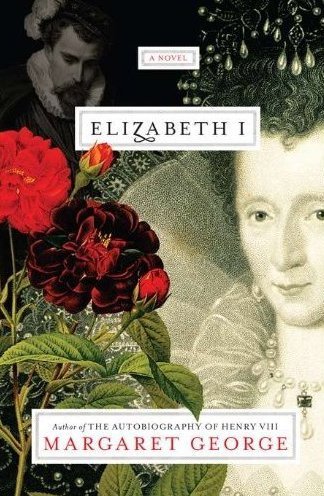
Margaret George has completed a gripping and beautifully written novel about the life of Queen Elizabeth I, the virgin queen of England. This sweeping biographical novel depicts the last thirty years of the queen's reign.


Elizabeth I was born in 1533 to King Henry VIII and Anne Boleyn who would later be executed to make way for the king's next wife.
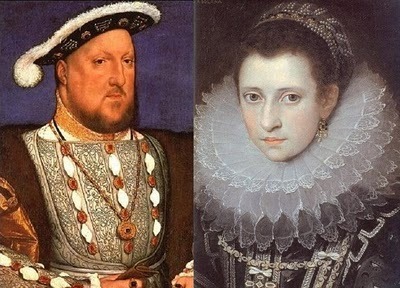 King Henry VIII and Anne Boleyn
King Henry VIII and Anne BoleynIn this mesmerising novel, the story of Elizabeth's life is revealed through two first person narratives; that of Elizabeth herself, and Lettice Knollys, her jealous cousin and arch-rival; an ambitious hussy who continually schemes behind her back.
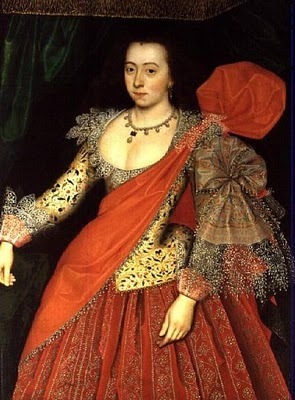 Lettice Knollys
Lettice KnollysThe tale begins in 1588 at the start of the Spanish Armada after Elizabeth's rejection of a marriage proposal from King Philip II of Spain.
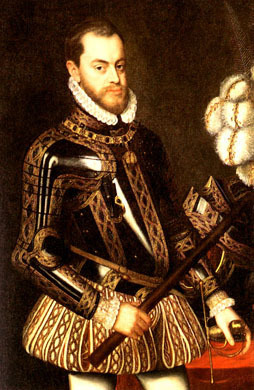 Philip II
Philip IIDeeply offended, and irritated by English progress in exploring the New World, the Spanish king launched his vast naval fleet to raid England. Known as a woman who ruled with her heart, the book more than accurately displays her compassion and humanity throughout the manoeuvrings of the colourful personalities of her Tudor court, the famine in England, uprisings in Ireland, and continued threats from Spain.
The author skilfully weaves in the subplots of various characters into her story. We learn of Shakespeare's manoeuvrings through his work.
 William Shakespeare
William ShakespeareThe treachery of her stepson, Robert Devereaux, First Earl of Essex plays a large role in the story. His covetous and deceitful deeds continue to cause havoc in Elizabeth's life as she continually tries to settle the uproar he causes despite her struggles with insufficient resources to help her famine-stricken people. Unselfishly, she pawns her jewels and washes the feet of her subjects on Maundy Thursday.
 Robert Devereaux 1st Earl of Essex
Robert Devereaux 1st Earl of EssexFrom start to finish, one cannot help but become endeared with Elizabeth's generosity and tolerance. This biographical novel has everything to keep a reader turning its pages long into the night – intrigue, humour, passion, and innocence vs. illicit love. Beautiful prose lines each page, drawing the reader deep into Elizabeth's most inner thoughts. Every scene fascinated me because of its rich detail. Although there were numerous characters named, the author knew who to keep in the background and who to bring to the forefront, thereby not creating confusion when trying to keep track of them all. It is evident Margaret George has completed years of research into the Tudors. An incredible novel which will no doubt receive high acclaim! Get it now. You simply must.




































Published on May 20, 2011 05:47
Elizabeth I by Margaret George

Margaret George has completed a gripping and beautifully written novel about the life of Queen Elizabeth I, the virgin queen of England. This sweeping biographical novel depicts the last thirty years of the queen's reign.


Elizabeth I was born in 1533 to King Henry VIII and Anne Boleyn who would later be executed to make way for the king's next wife.
 King Henry VIII and Anne Boleyn
King Henry VIII and Anne BoleynIn this mesmerising novel, the story of Elizabeth's life is revealed through two first person narratives; that of Elizabeth herself, and Lettice Knollys, her jealous cousin and arch-rival; an ambitious hussy who continually schemes behind her back.
 Lettice Knollys
Lettice KnollysThe tale begins in 1588 at the start of the Spanish Armada after Elizabeth's rejection of a marriage proposal from King Philip II of Spain.
 Philip II
Philip IIDeeply offended, and irritated by English progress in exploring the New World, the Spanish king launched his vast naval fleet to raid England. Known as a woman who ruled with her heart, the book more than accurately displays her compassion and humanity throughout the manoeuvrings of the colourful personalities of her Tudor court, the famine in England, uprisings in Ireland, and continued threats from Spain.
The author skilfully weaves in the subplots of various characters into her story. We learn of Shakespeare's manoeuvrings through his work.
 William Shakespeare
William ShakespeareThe treachery of her stepson, Robert Devereaux, First Earl of Essex plays a large role in the story. His covetous and deceitful deeds continue to cause havoc in Elizabeth's life as she continually tries to settle the uproar he causes despite her struggles with insufficient resources to help her famine-stricken people. Unselfishly, she pawns her jewels and washes the feet of her subjects on Maundy Thursday.
 Robert Devereaux 1st Earl of Essex
Robert Devereaux 1st Earl of EssexFrom start to finish, one cannot help but become endeared with Elizabeth's generosity and tolerance. This biographical novel has everything to keep a reader turning its pages long into the night – intrigue, humour, passion, and innocence vs. illicit love. Beautiful prose lines each page, drawing the reader deep into Elizabeth's most inner thoughts. Every scene fascinated me because of its rich detail. Although there were numerous characters named, the author knew who to keep in the background and who to bring to the forefront, thereby not creating confusion when trying to keep track of them all. It is evident Margaret George has completed years of research into the Tudors. An incredible novel which will no doubt receive high acclaim! Get it now. You simply must.









Published on May 20, 2011 05:47
May 15, 2011
The Confession of Katherine Howard by Suzannah Dunn

Suzannah Dunn's latest novel, recounts the compelling story of Katherine Howard, the fifth wife of Tudor King Henry VIII. The story unfolds through the first person narrative of her companion and lady-in-waiting, Cat Tilney, and is told in three parts based on the affairs of Katherine Howard.
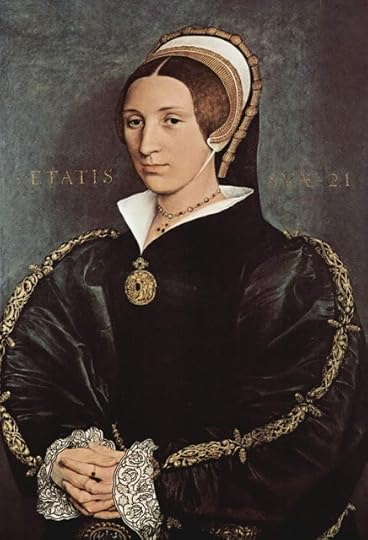 Katherine Howard
Katherine HowardIn the first part of the story, Katherine Howard and Cat Tilney live with the Dowager Duchess of Norfolk, a woman who took on the children of poor aristocratic relatives for education and training.
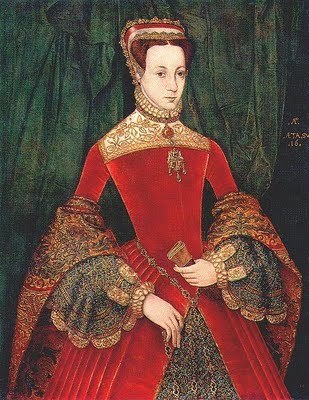 Dowager Duchess of Norfolk
Dowager Duchess of NorfolkBecause the Duchess was often away, she left her young charges to their own devices which resulted in too many freedoms and a very licentious household indeed. Katherine, a passionate young girl with a keen interest in men and sex, soon became embroiled in her first affair with her music teacher, Henry Mannox.
A short time thereafter, Katherine abandoned Mannox to take up with Francis Dereham. That affair cooled when a position was arranged for Katherine in King Henry's court as lady in waiting to the new queen, Anne of Cleves.
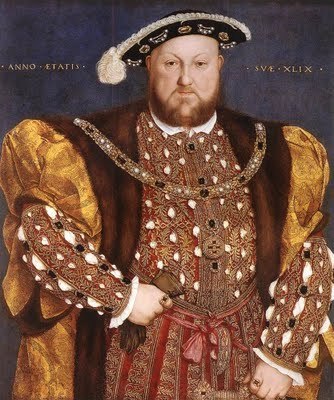 King Henry VIII
King Henry VIII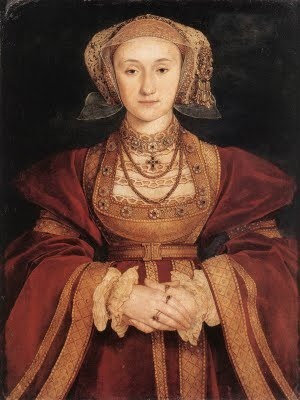 Anne of Cleves
Anne of ClevesHenry lacked interest in Anne and instead found himself quite taken with Katherine. So much so that the king annulled his marriage and married Katherine only three weeks later.
Meanwhile, back at the Dowager's household, an abiding friendship developed between Cat and Francis Dereham that blossomed into love. Before long, Queen Katherine summoned them both to court. It was then that Cat discovered Katherine was conducting an affair with Thomas Culpepper, a favorite courtier and a gentleman of the king's bedchamber.
Katherine's indiscretions soon became known. Cat tried to warn Katherine to put an end to her affair or it could result in her death, but Katherine continued to manipulate and set out to fix matters by her own hands. To keep her ex-lovers silent, she hired them into her household – Henry Mannox as a musician and Francis Dereham as her secretary.
Mary Hall, an embittered chambermaid at the Dowager Duchess' household and witness to Katherine's torrid affairs, revealed the information to Thomas Cranmer, the Archbishop of Canterbury and a friend of King Henry.
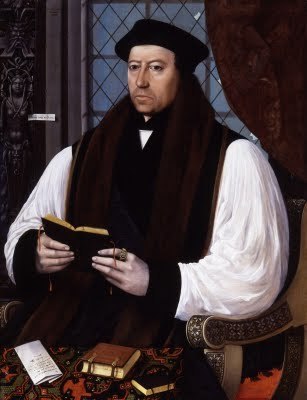 Thomas CranmerArchbisoph of Canterbury
Thomas CranmerArchbisoph of Canterbury Cranmer, fearful that any contract made between Katherine and Francis Dereham would invalidate the marriage to the king, revealed this information to Henry. A secret investigation was launched which resulted in Dereham's and Culpepper's imprisonment. Under torture, the two men confessed and ultimately Katherine was charged and executed.
Suzannah Dunn has penned an intriguing tale of a queen's self-inflicted downfall. Filled with lush descriptions, the prose is easy to read and the story moves along in an interesting way. The novel focuses quite heavily on the adolescence of Katherine and Cat, whereas I longed for more details about Katherine's troubles during her marriage with the king and her subsequent imprisonment and execution, like the title suggested. I think the story might have been much stronger in Katherine's viewpoint rather than that of Cat who is too far removed from true conflict.
Even so, I found the novel to be well written and a wonderful depiction into the treacheries of court life during the 16th century. It is an enjoyable read with plenty of historical accuracy and details to keep readers interested.










Published on May 15, 2011 18:37
May 13, 2011
Hoyden of the Week - Wild woman driver
Published on May 13, 2011 05:55








